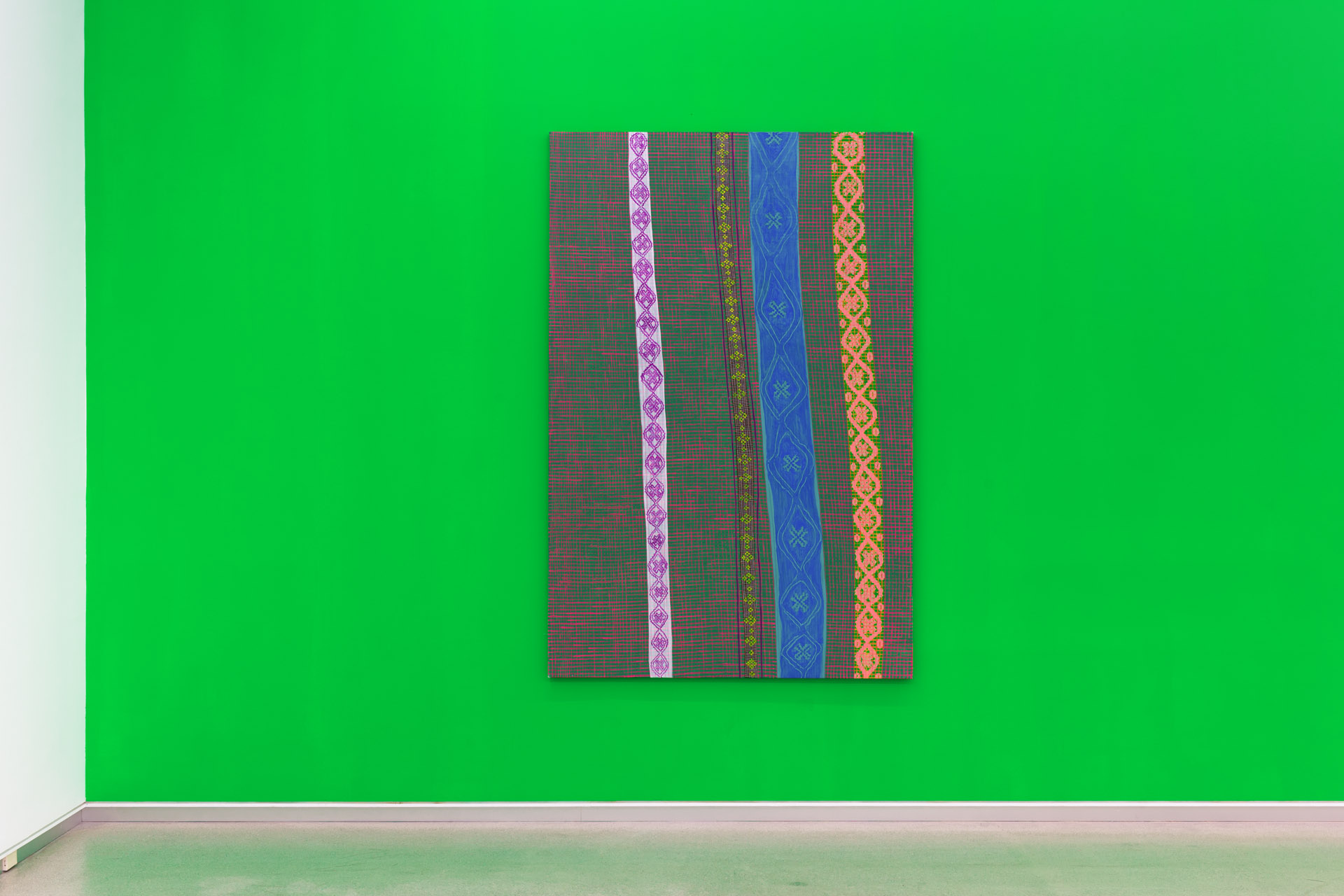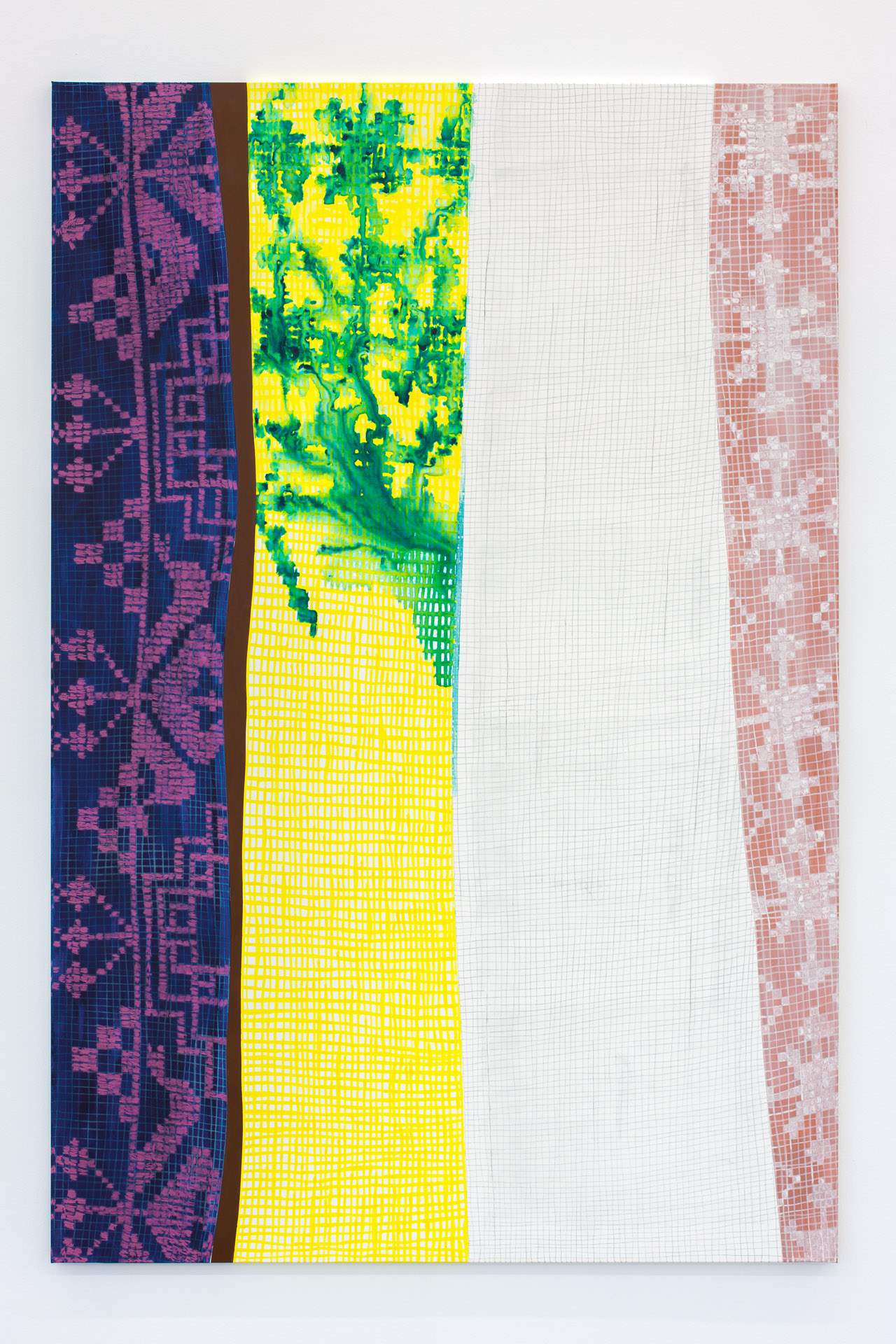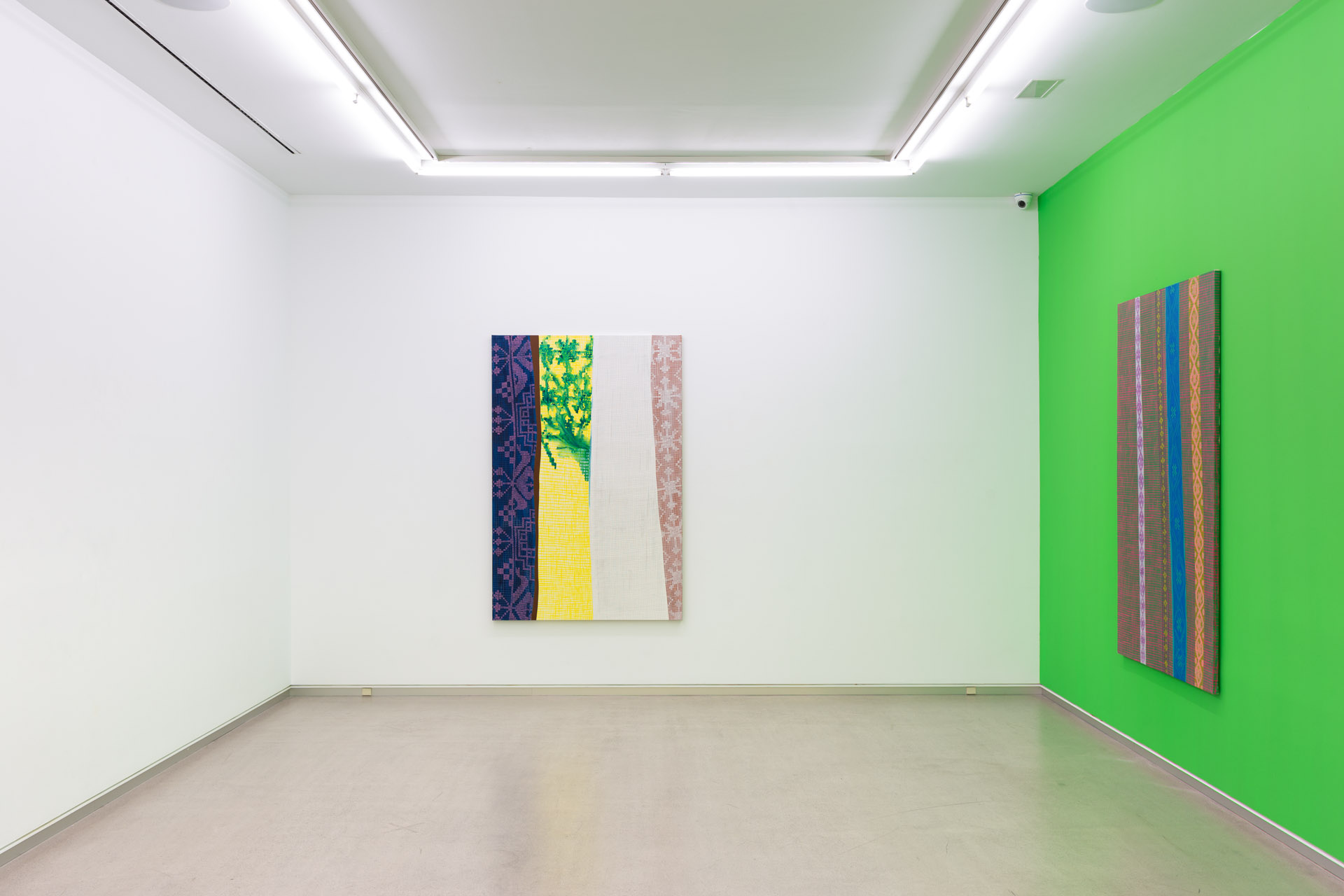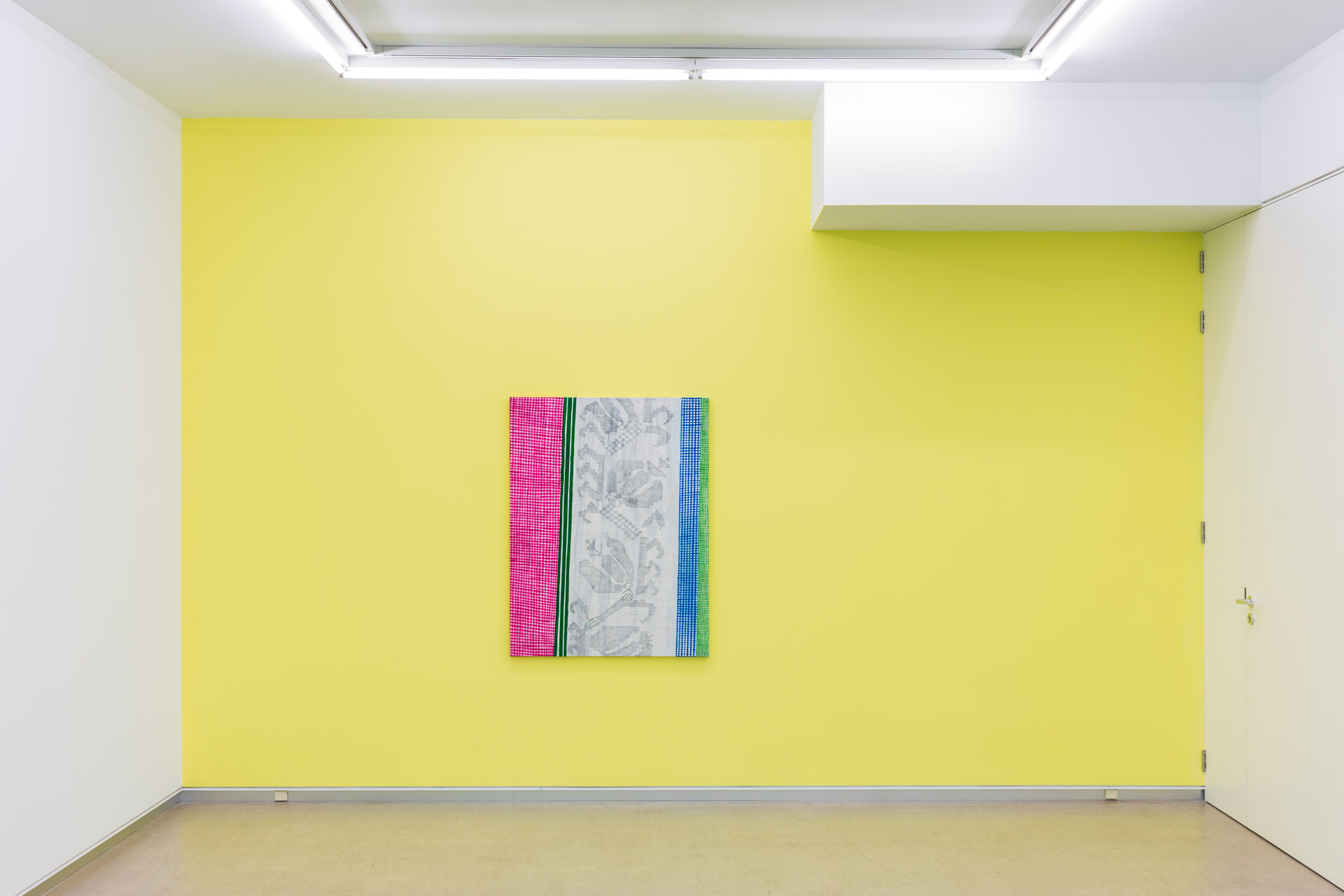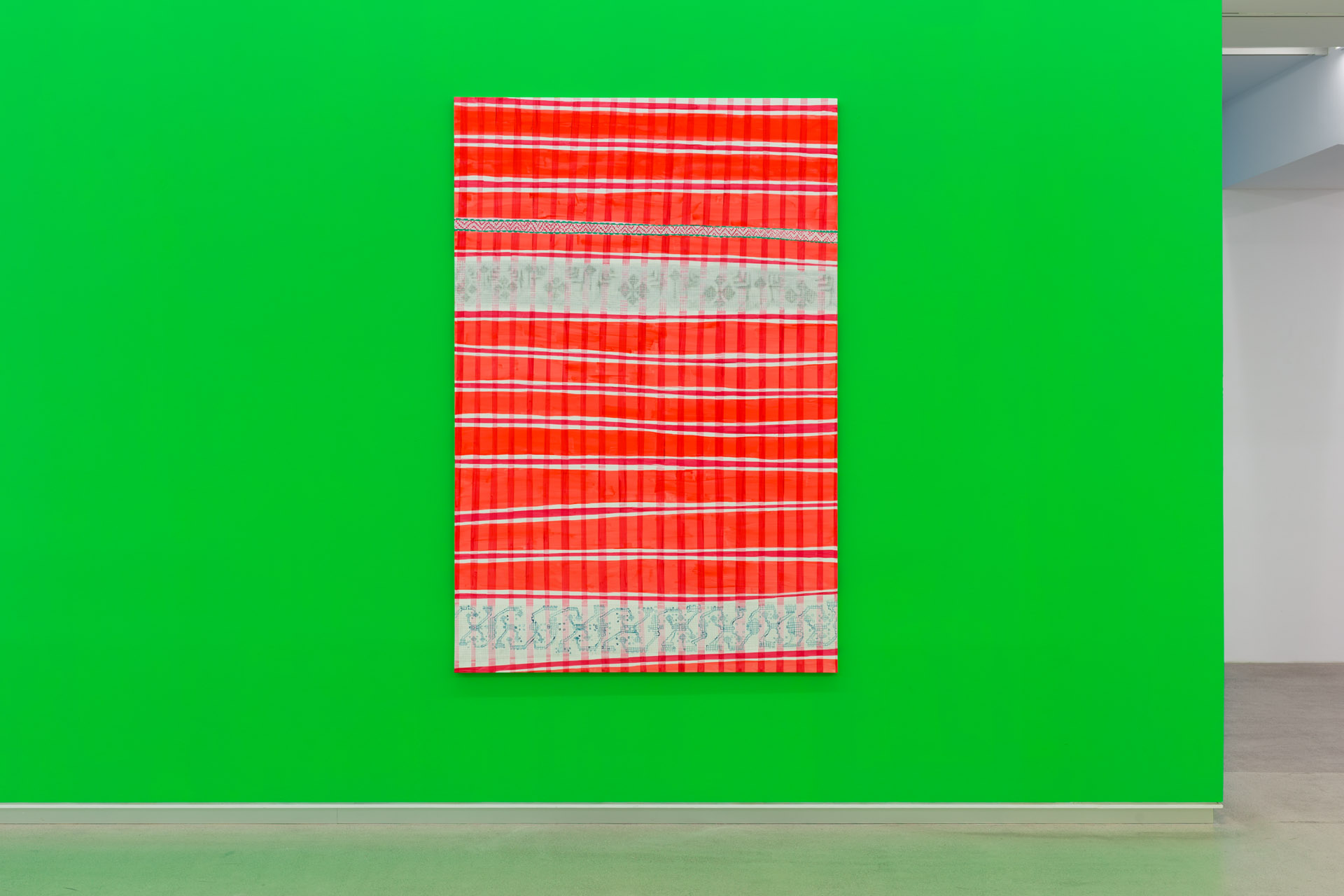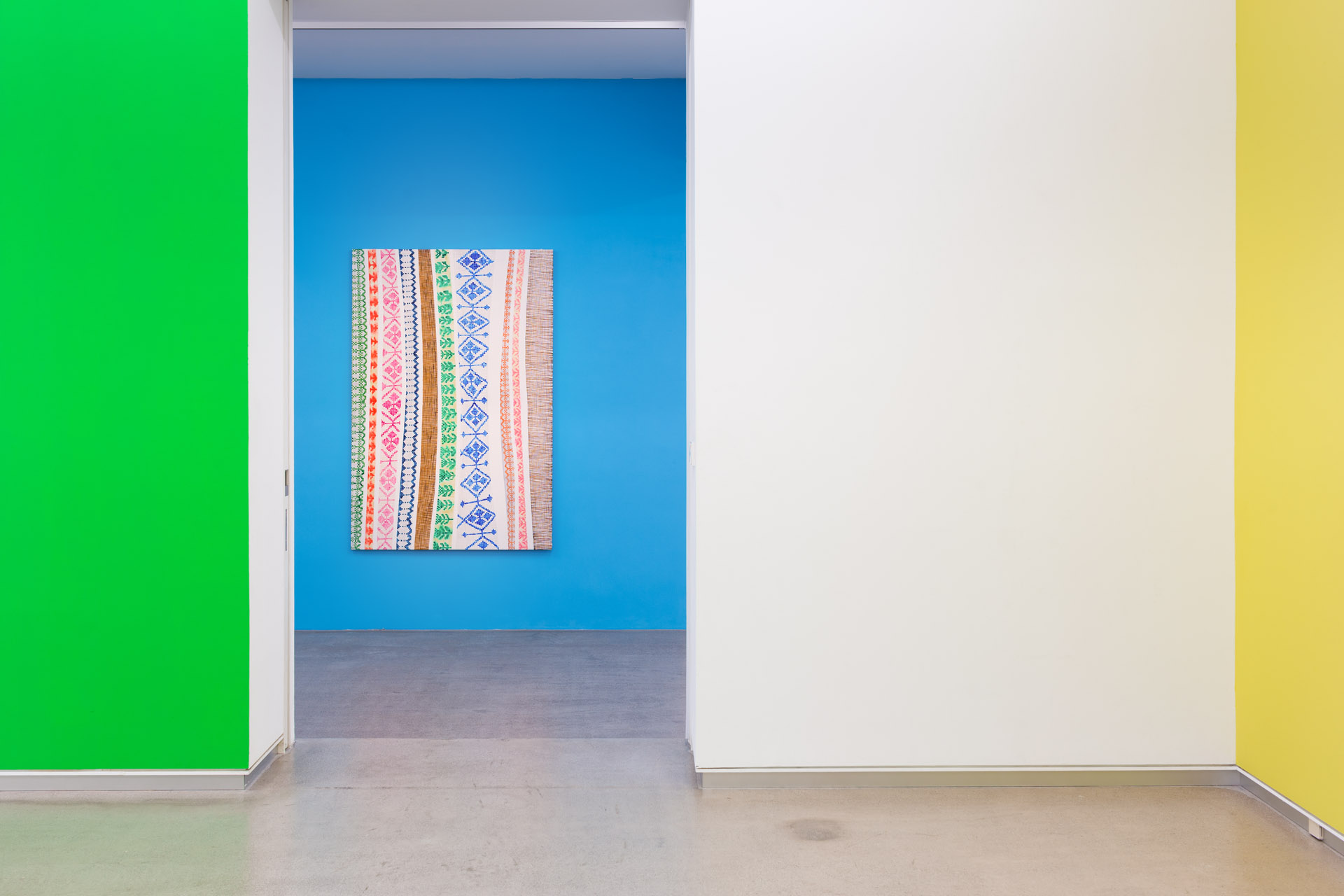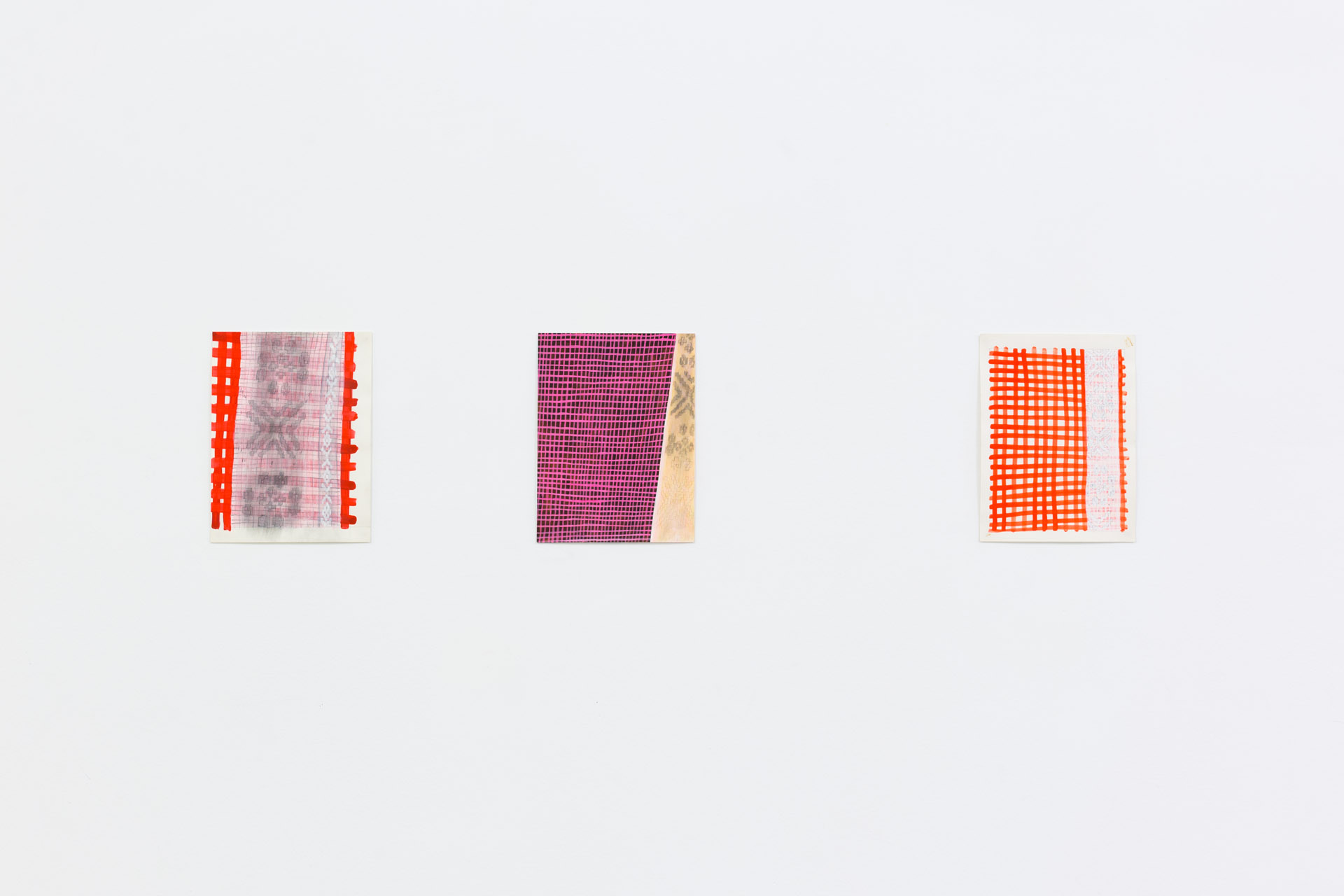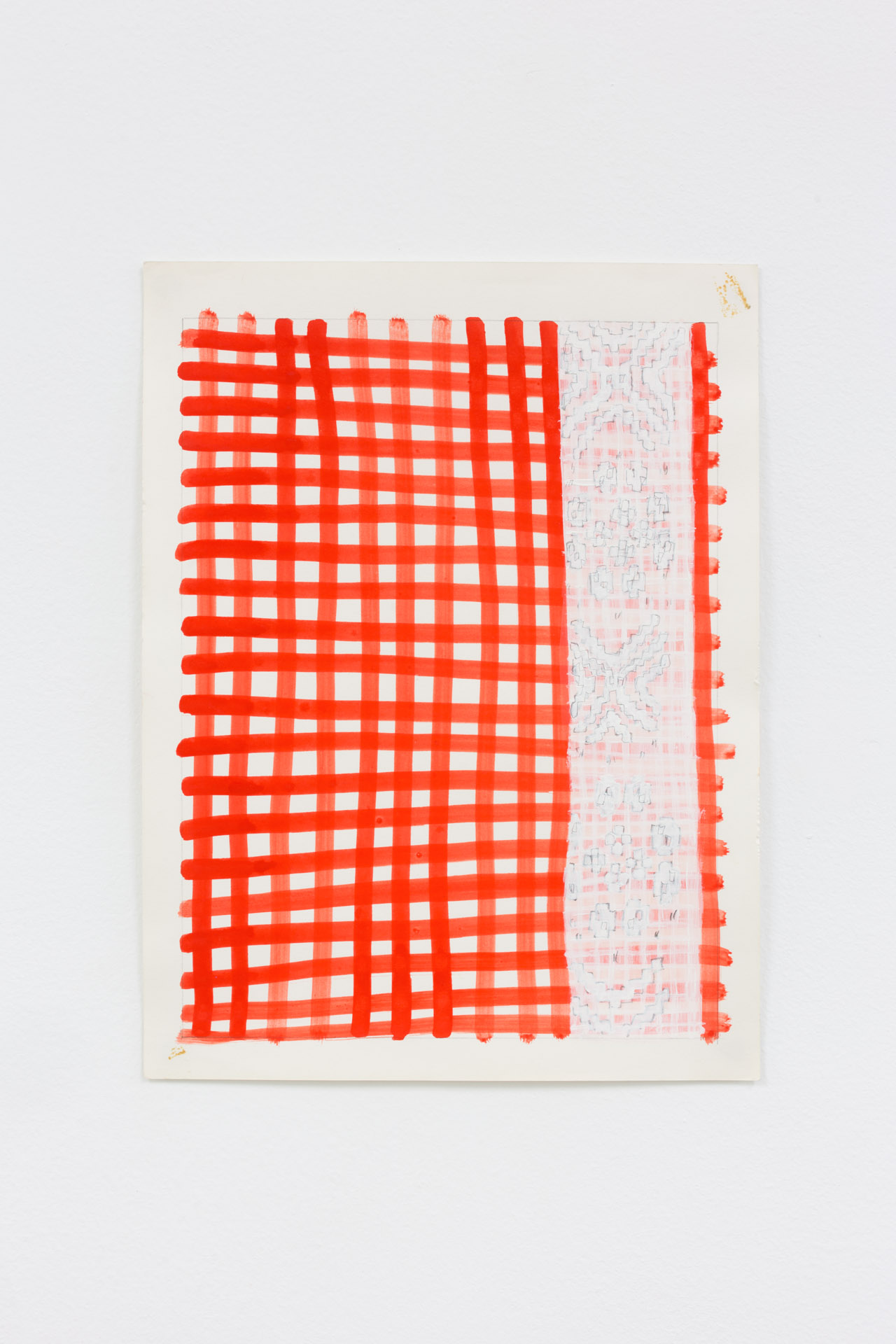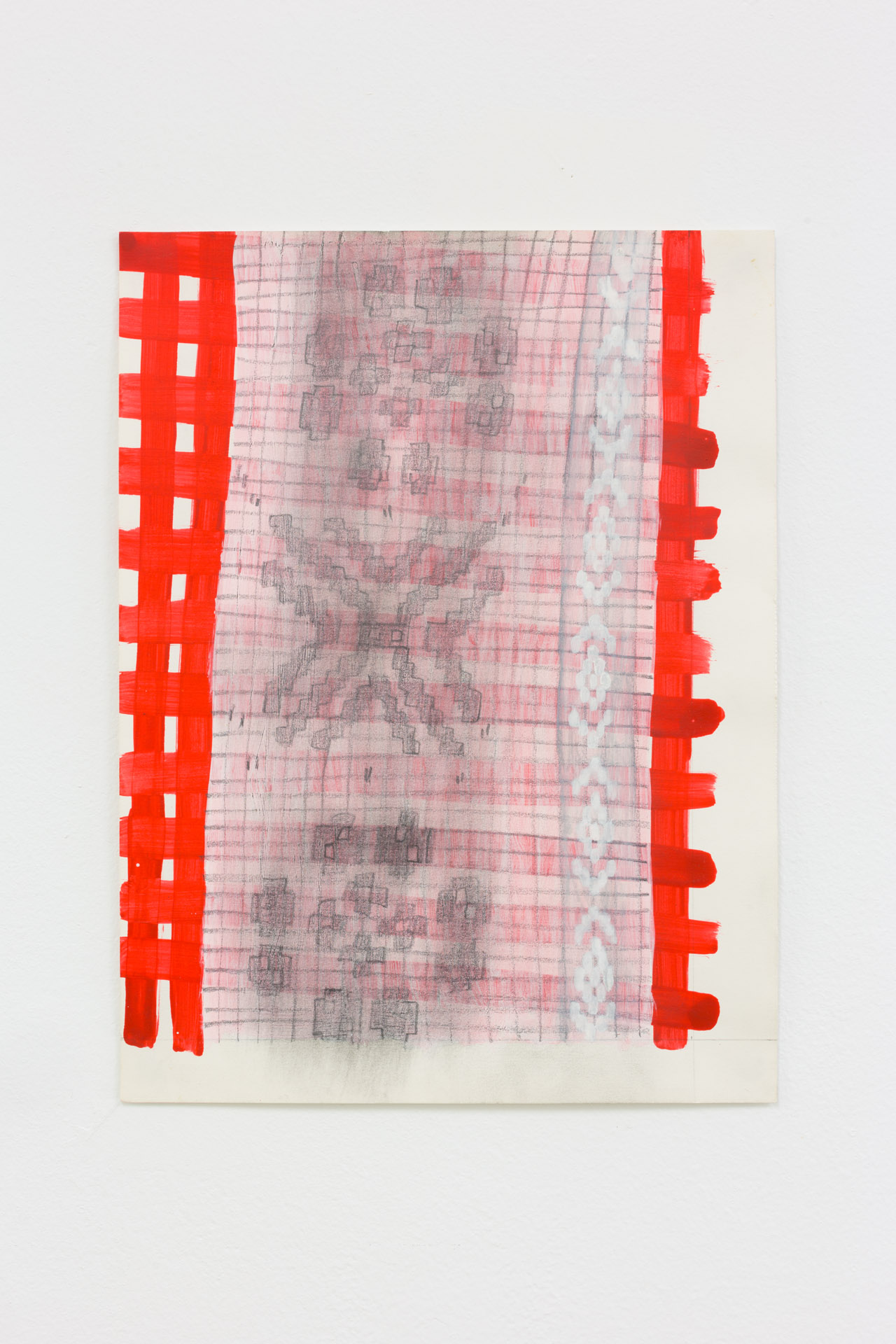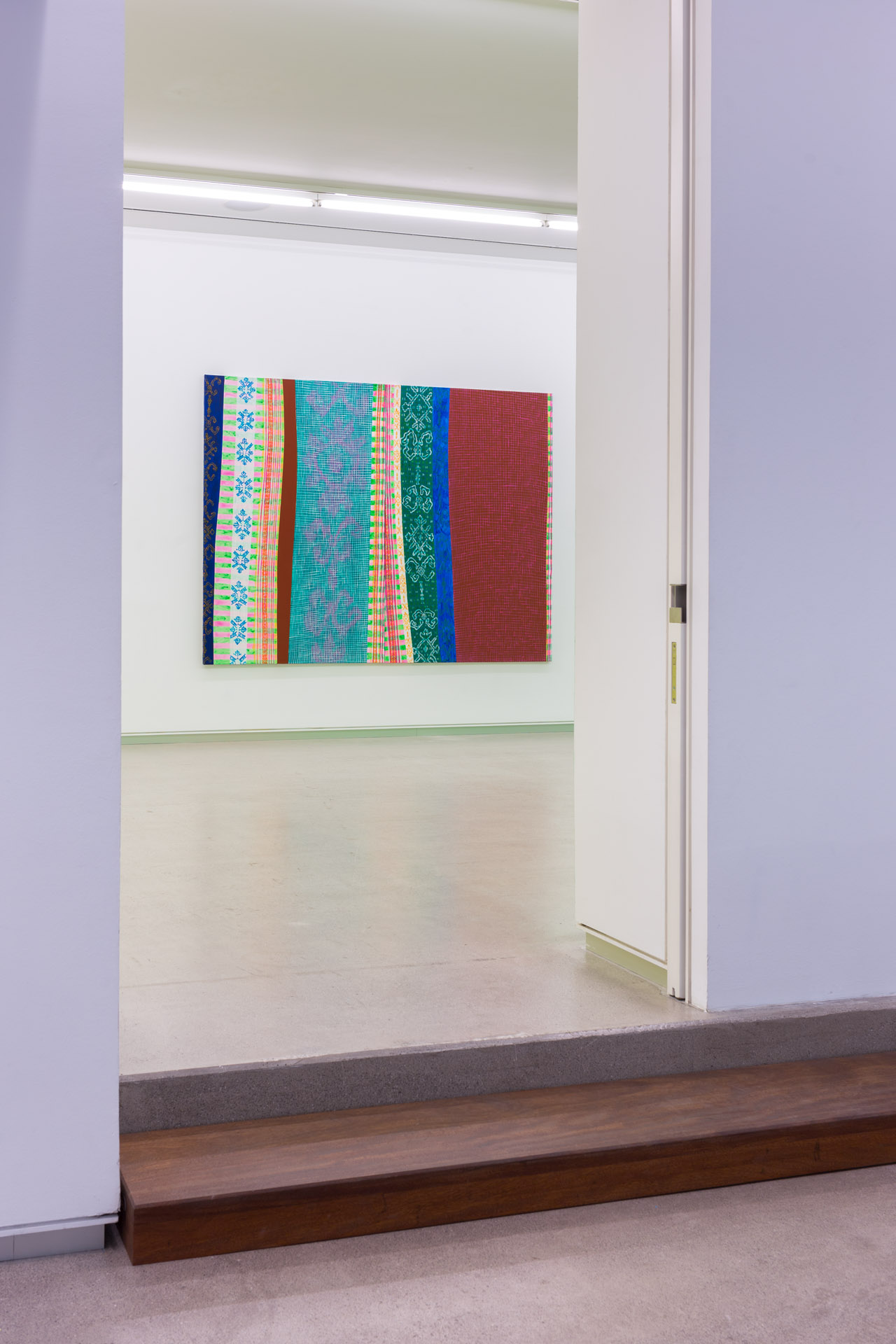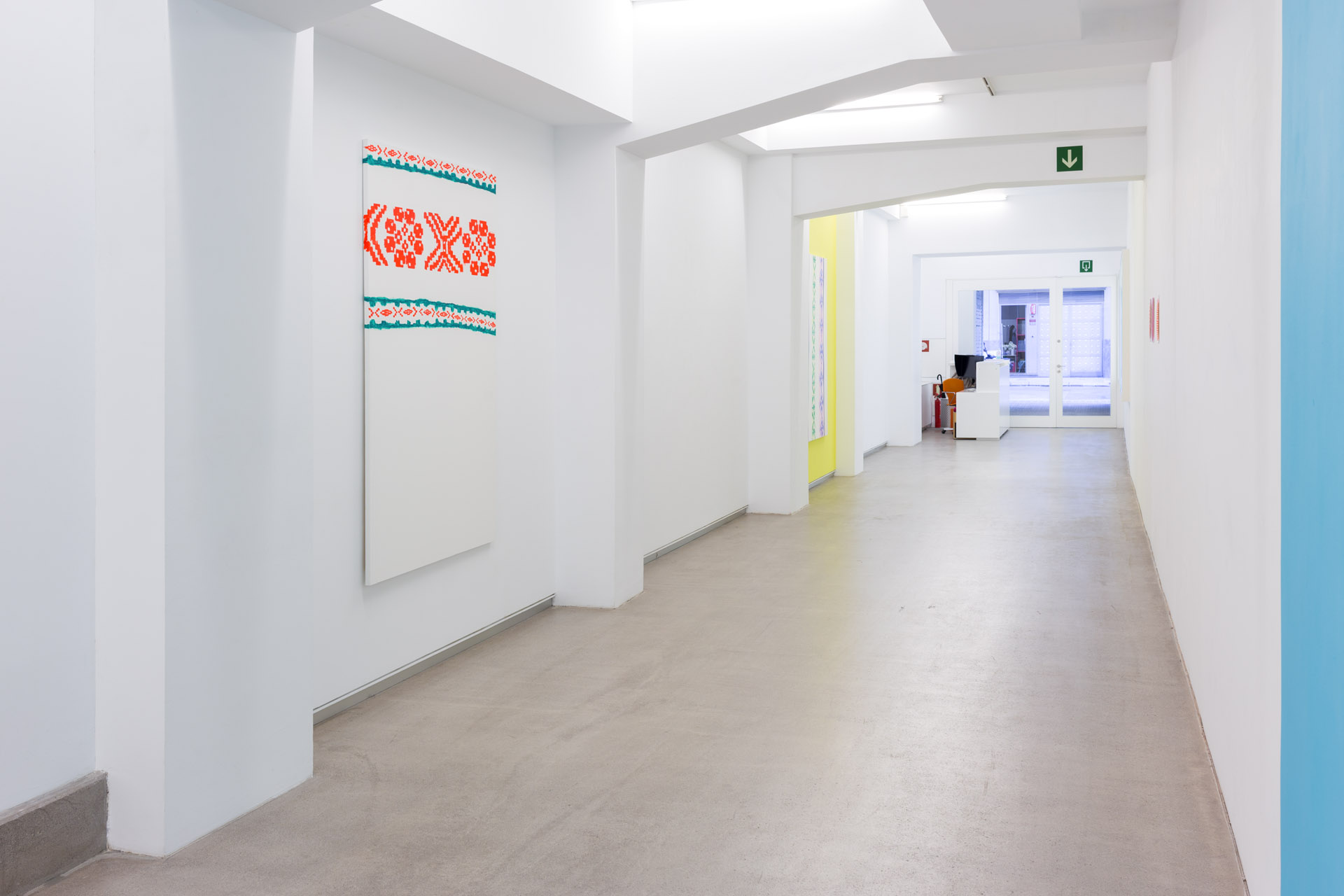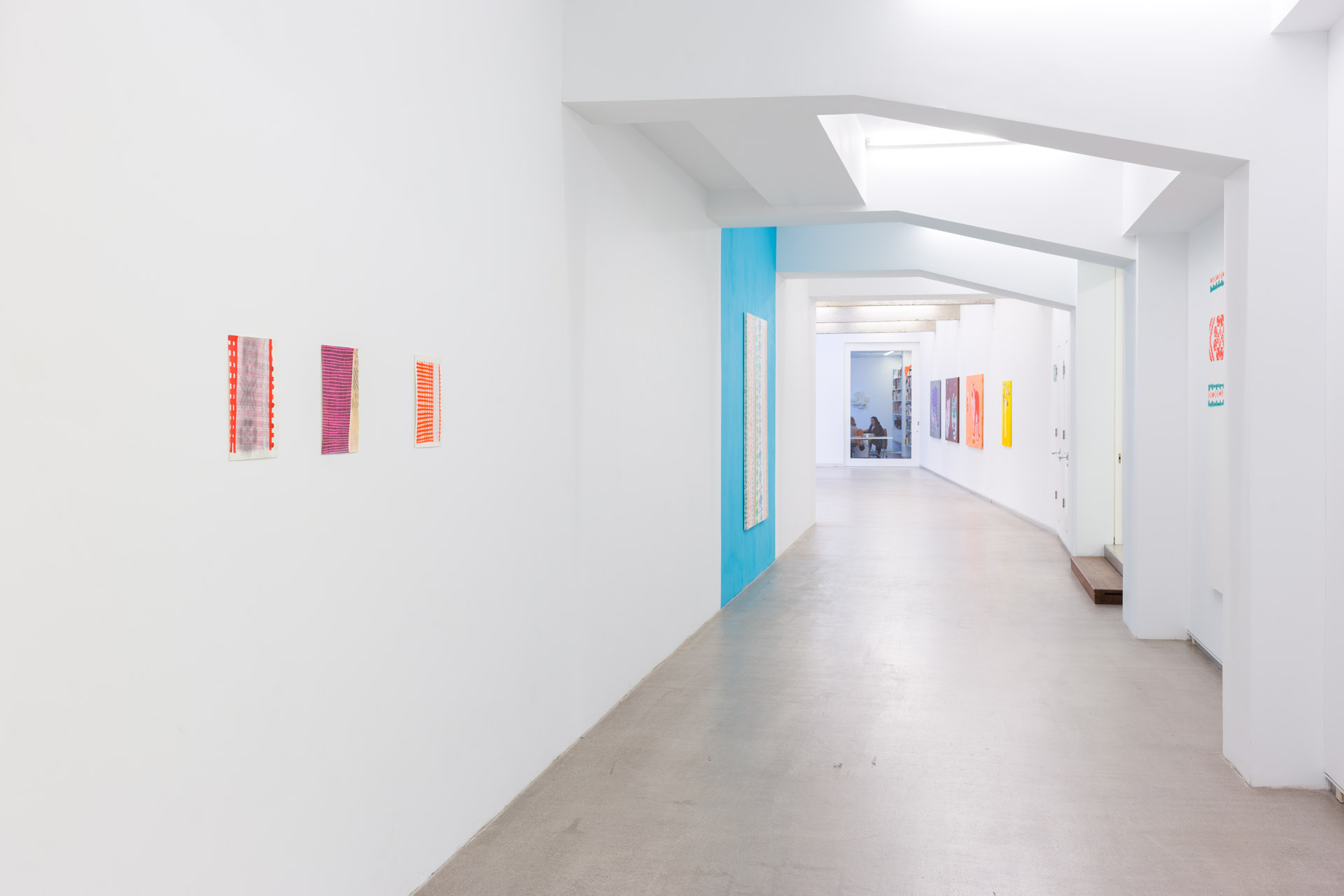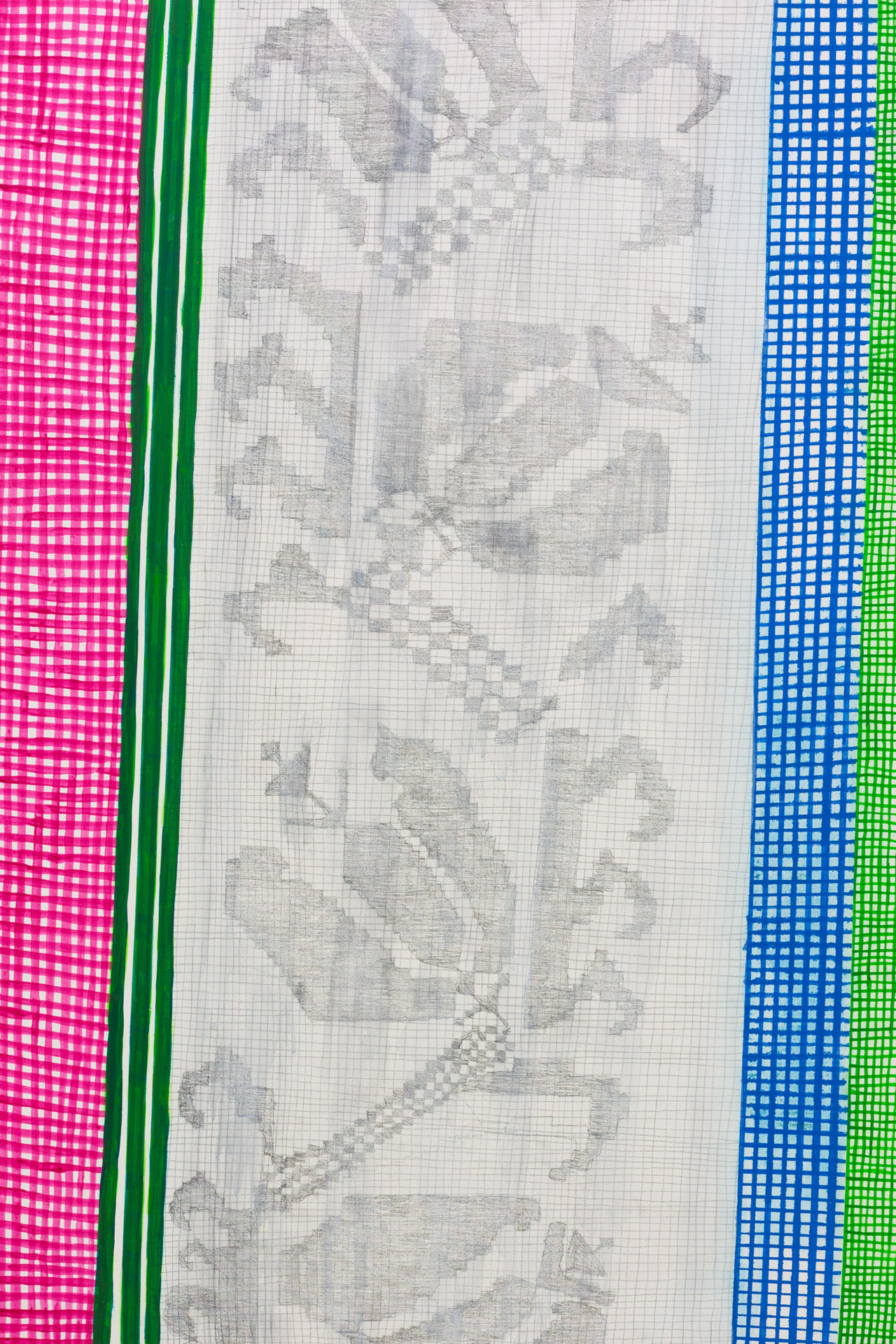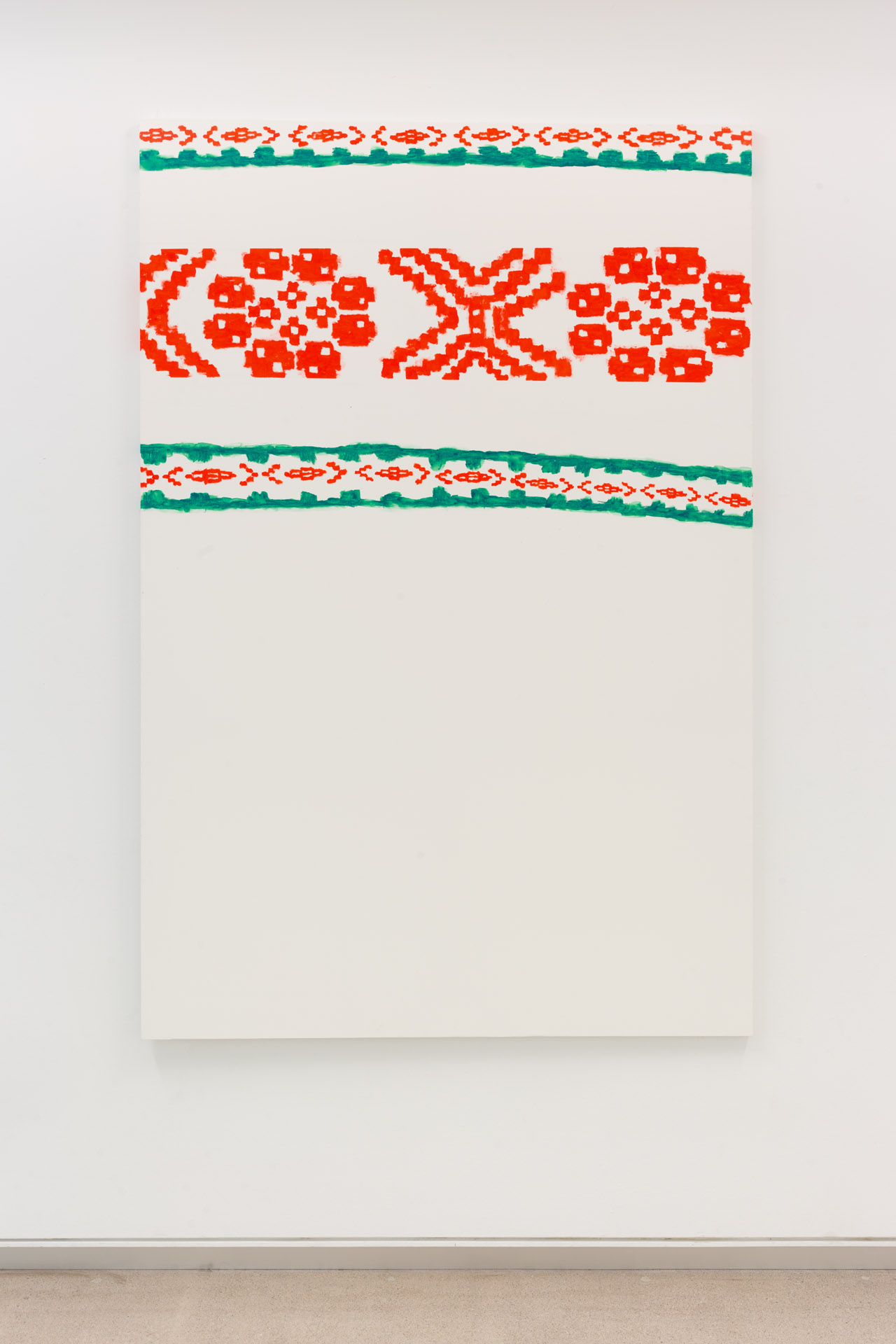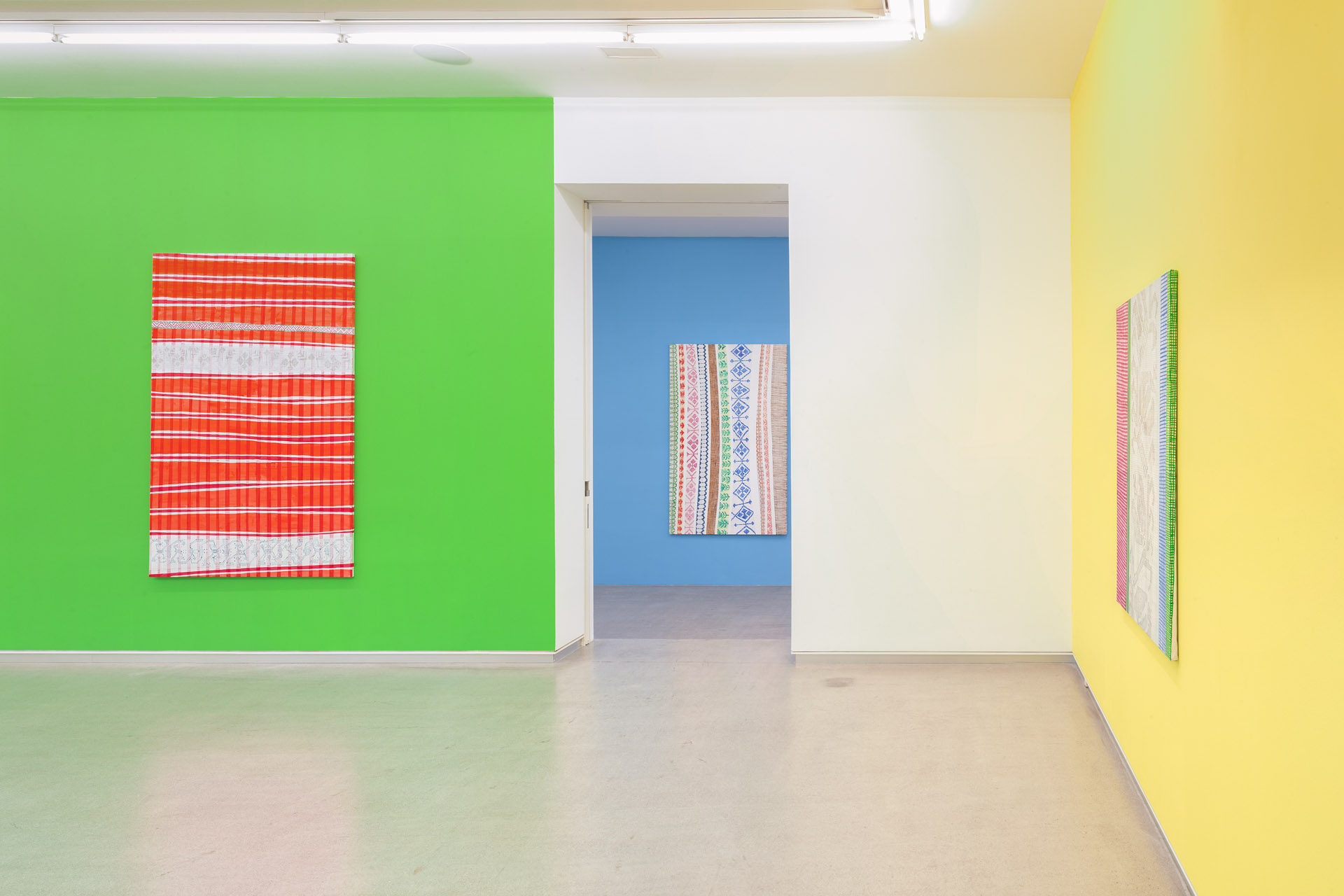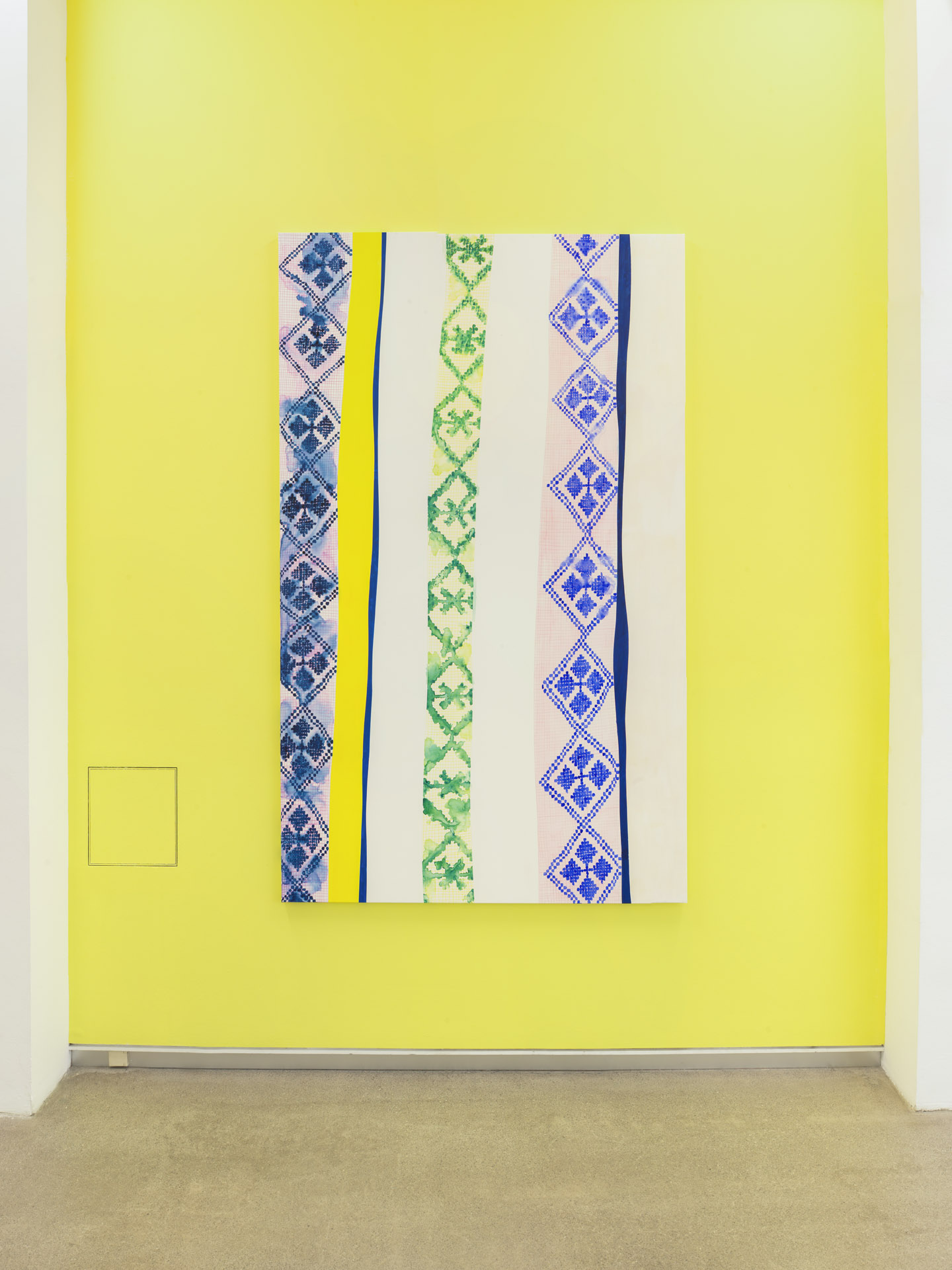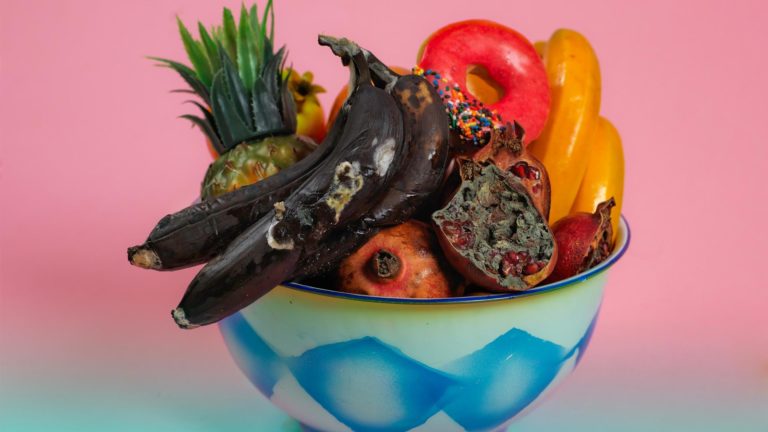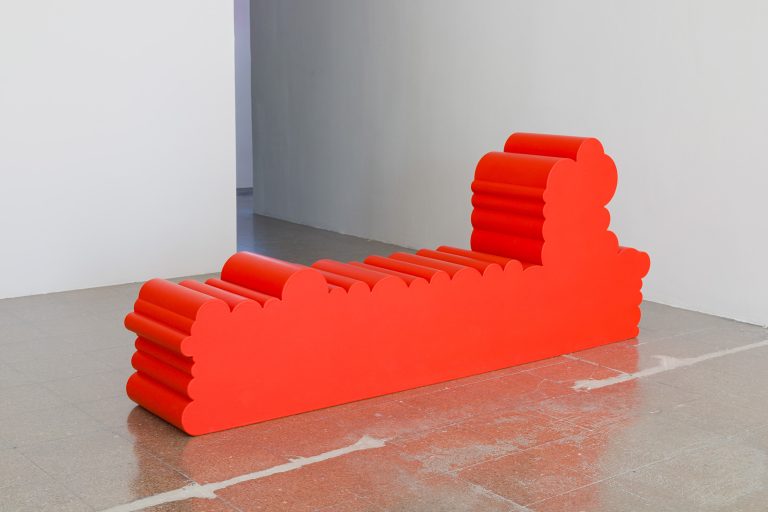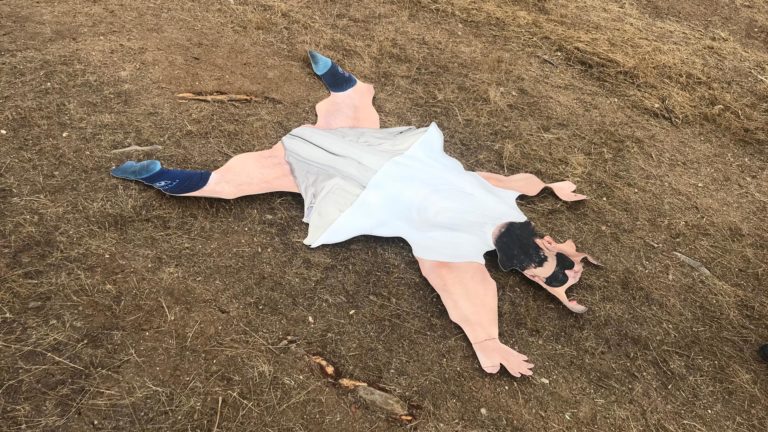Artist: Gabriela Kraviez
Exhibition title: Still Obsessive Lady
Venue: CarrerasMugica, Bilbao, Spain
Date: December 18, 2021 – February 23, 2022
Photography: Daniel Mera / all images copyright and courtesy of the artist and CarrerasMugica, Bilbao
Pre(text): from Latin: praetextus, to weave before or in front, to fringe, edge, border.
Art practice, conversely to linear time and, like all ways of thinking, expands in all directions and consists of various interwoven layers like a large fabric with its knots and loops.
In this process, certain older works can re-emerge and make new connections, updating themselves in the present and thus produce new meanings. That is what happened when I returned to the series I called Obsessive Lady.
When I was invited to prepare this exhibition, I saw it as a chance to reactivate and continue the series I had begun in 1999 and left on hold in 2003/4.
At the time, I was interested in contaminating the kind of painting which embodied the hierarchical, phallocentric, exclusionary and authoritarian system that ended up in the “grandiose” and commercial painting which became the signature of the eighties. The same system which had eliminated a large part of the works made by women since the beginnings of the twentieth century, works that approached painting from a much broader perspective, looking towards popular and decorative arts, and incorporating weaving, embroidery and other techniques considered to be minor and related with domesticity. One of my most important references were the artists from the Russian avant-garde like Liubov Popova, Varvara Stepanova, Olga Rozanova and particularly the relationship between painting and textile design. But also the work of Sonia Terk Delaunay and Sophie Taeuber-Arp. And I had also discovered the work of Gego in the mid-nineties, with her weavings in space and also the work of Lygia Pape, two artists who conceived weaving as a way of thinking. I was also particularly interested in the work of Rosemarie Trockel, her mechanically executed paintings and her jerseys and balaclavas, somewhere between clothing and sculpture.
My concerns around twenty years ago now seem to have found new space and new connections in the present. The meaning assigned by patriarchal society to the idea of femininity and what types of behaviour and labour are defined as feminine, the existence of a “women’s” art produced by “women artists” which implies the prevalence of a hierarchy within the language of art which presupposes that art and artists are male.
I was interested in the notion of stereotypes of women, in tasks and spaces considered feminine, in the inextricable relationship between the decorative, the idea of beauty and women largely explained by the division of labour. As textile production had been allocated to women, it is no accident that the majority of ornamental artists in the world are women.
But I never knew how to weave or to embroider…
I decided to address the very notion of femininity by means of “supposedly feminine” painting, through the disproportionate representation of domestic fabrics and embroidered cloths. To expand these crafts reserved for women to large formats, introducing a note of humour and expressing their visual and poetic power.
This lends visibility to a kind of art viewed as ”feminine” while at the same time questioning the very notion of femininity as a purely ideological construct and perhaps to rethink another kind of femininity beyond the binary system.
Reading Gilles Deleuze, I wanted to believe in a becoming-woman of society, a flight from the binary body in order to escape the dominant system … but, despite certain advances, we still talk about “women artists”.
The series of works I am presenting in this exhibition explores different cross-stitch embroidery patterns from the Basque Country. Basque embroidery is greatly indebted to linen-making which was largely carried out by women. The transformations from the plant to making the threads were accompanied by cultural expressions marked by “gender enculturation”1 and just as the embroidery followed a pattern, so too did women follow patterns of behaviour deemed appropriate to their sex.
When I started the series, I thought about the kitchen as a cliché of the feminine domestic space. I remembered old cooking programmes on television with cooks (women) that did not have the glamour of today’s chefs (men) but rather embodied a popular cliché of a region or country, like, for instance Maité who represented Iparralde, the French Basque Country.
I took embroidered napkins and kitchen towels as my models. I was always intrigued by the capacity of ornamental motifs to create a particular relationship with a given object, and how a simple cloth or napkin can convey familiarity, memories and a sense of belonging to a culture… On the other hand, one is also aware that embroidery motifs are made up of patterns coming from a shared repertoire of various cultures, that those particular signs of identity conceal a history full of influences and cross-contaminations. As a foreigner, it was no accident that I chose to paint Basque patterns …
In addition, embroidery shares roots with the word “border”, and I am interested in that off-centred, displaced space that connects two other spaces.
I have always been interested in fabrics and textiles as structures with complex relationships, intimately bound to the body and to our individual and collective history. Textiles as related with the mechanical and the manual, with the tactile, with emotions and memories.
I look at textiles as a complex metaphor to think about drawing and painting.
I think of painting as a fabric, accentuating the role of the line and colour as structural elements of the fabric itself.
I choose a number of patterns and then repeat them. Personally, I am obsessed with repetition. If there is a point in common between all my works, it is repetition. I concentrate on a pattern and its repetition. Repeating is also an obsession, an addiction.
Perhaps that is why I love textiles with wefts and patterns that are repeated ad infinitum.
Repeating to transform, repeating to understand, repeating to prove that the manual gesture is always different, repeating to get into a rhythm of concentration, repeating to interact with time, repeating to let myself be carried along, repeating in order to think.
Becoming aware of the act of making, of the hand as a form of thinking. To concentrate on the lines, on the different wefts. To paint their elasticity, their irregularity, their tension, their force and their fragility. To take my lead from the grain of the fabric, the texture of the paper, the weight and the trembling of my own hand…
To work the colour, colour as line, colour as form, to accentuate the power of the ornamental as a mark of a personal and collective history.
Over the last twelve years, museums and other art institutions have been lending greater visibility to textile-based works made by women in the twentieth century, while art fairs and galleries are exhibiting a large number of works by contemporary artists who continue this legacy. Works with textile appear to
expand and multiply.
The series Obsessive Lady returns anew to the present.
Gabriela Kraviez (Buenos Aires, 1965) lives and works between Paris and San Sebastián. She has a BA in Fine Arts from Beaux-Arts de Paris and an MA in Aesthetics and Contemporary Art from Université de Paris VIII and she attended symposiums in Philosophy with Alain Badiou in the Collège International de Philosophie in Paris.
She was actively involved in courses at Arteleku between 1994 and 2014. Her work has been seen in many solo and group shows including Imaginarios mecánicos (IVAM, Valencia), Zeru bat, hamaika bide (Artium), Kaldarte. Proyectos en el espacio público (Caldas de Reis) and Ruido como de piedra en el neumático izquierdo (Halfhaouse, Barcelona), among others.
1- Bordados de punto de cruz en la colección del museo San Telmo, Mariasun de Miangolarra, Eva M. Elorza, 2017.
Gabriela Kraviez, Still Obsessive Lady (Dripping), 2021 Acrylic, acrylic ink, pencil on canvas 195 x 130 cm
Gabriela Kraviez, Still Obsessive Lady, 2022, exhibition view, CarrerasMugica, Bilbao
Gabriela Kraviez, Still Obsessive Lady, 2022, exhibition view, CarrerasMugica, Bilbao
Gabriela Kraviez, Double Obsessive Lady (Brown and Green), 2002, Acrylic, vinyl on canvas, 195 x 260 cm (diptych)
Gabriela Kraviez, Still Obsessive Lady, 2022, exhibition view, CarrerasMugica, Bilbao
Gabriela Kraviez, Obsessive Lady II (Green and Pink), 2001 Acrylic, vinyl on canvas, 195 x 130 cm
Gabriela Kraviez, Obsessive Lady (Red), 2001 Acrylic, vinyl, pencil on canvas 195 x 130 cm
Gabriela Kraviez, Still Obsessive Lady, 2022, exhibition view, CarrerasMugica, Bilbao
Gabriela Kraviez, Still Obsessive Lady (Tablecloth), 2021 Vynil, acrylic ink, pencil on canvas 195 x 130 cm
Gabriela Kraviez, Still Obsessive Lady, 2022, exhibition view, CarrerasMugica, Bilbao
Gabriela Kraviez, Obsessive Lady (Red and White), 2001 Acrylic, pencil on canvas, 24 x 32 cm
Gabriela Kraviez, Obsessive Lady (Pink and Brown), 2001 Acrylic, vinyl, pencil on canvas, 24 x 32 cm
Gabriela Kraviez, Obsessive Lady (Erased Red), 2001 Acrylic, pencil on canvas, 24 x 32 cm
Gabriela Kraviez, Still Obsessive Lady, 2022, exhibition view, CarrerasMugica, Bilbao
Gabriela Kraviez, Still Obsessive Lady, 2022, exhibition view, CarrerasMugica, Bilbao
Gabriela Kraviez, Still Obsessive Lady, 2022, exhibition view, CarrerasMugica, Bilbao
Gabriela Kraviez, Still Obsessive Lady, 2022, exhibition view, CarrerasMugica, Bilbao
Gabriela Kraviez, Still Obsessive Lady, 2022, exhibition view, CarrerasMugica, Bilbao
Gabriela Kraviez, Obsessive Lady (Rectangular), 2001 Acrylic, vinyl, pencil on canvas, 130 x 100 cm
Gabriela Kraviez, Still Obsessive Lady (mantel), 2021 Acrylic, pencil on canvas, 195 x 130 cm
Gabriela Kraviez, Still Obsessive Lady, 2022, exhibition view, CarrerasMugica, Bilbao
Gabriela Kraviez, Still Obsessive Lady, 2022, exhibition view, CarrerasMugica, Bilbao
Gabriela Kraviez, Still Obsessive Lady (Faded), 2021 Acrylic, acrylic ink, pencil on canvas 195 x 130 cm

